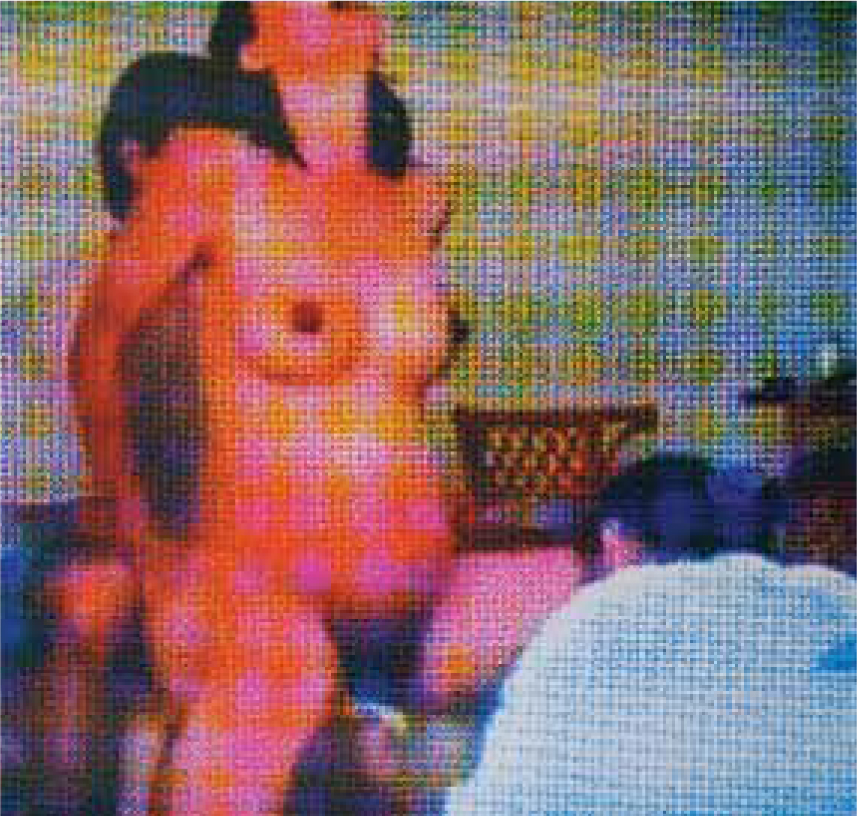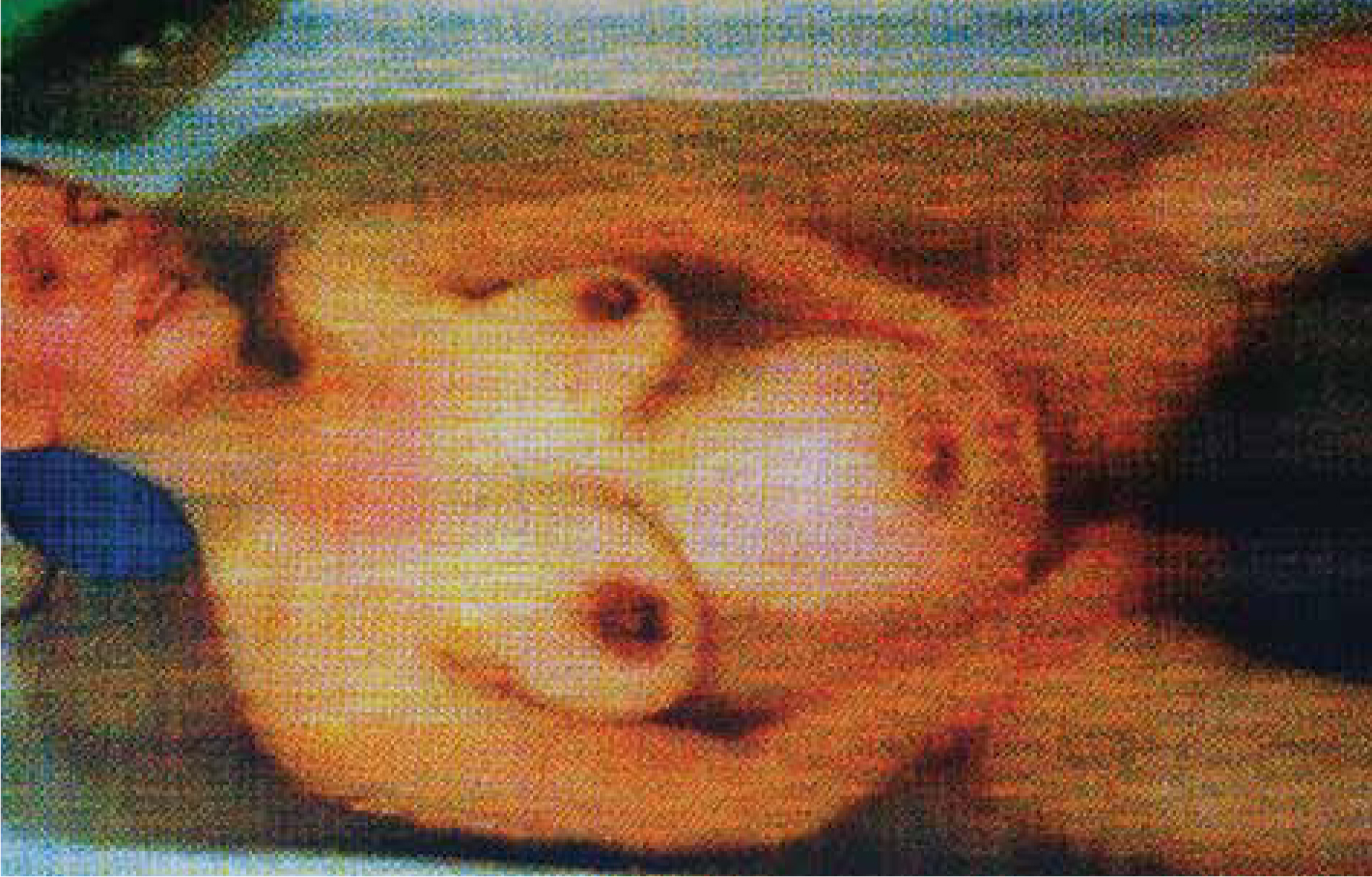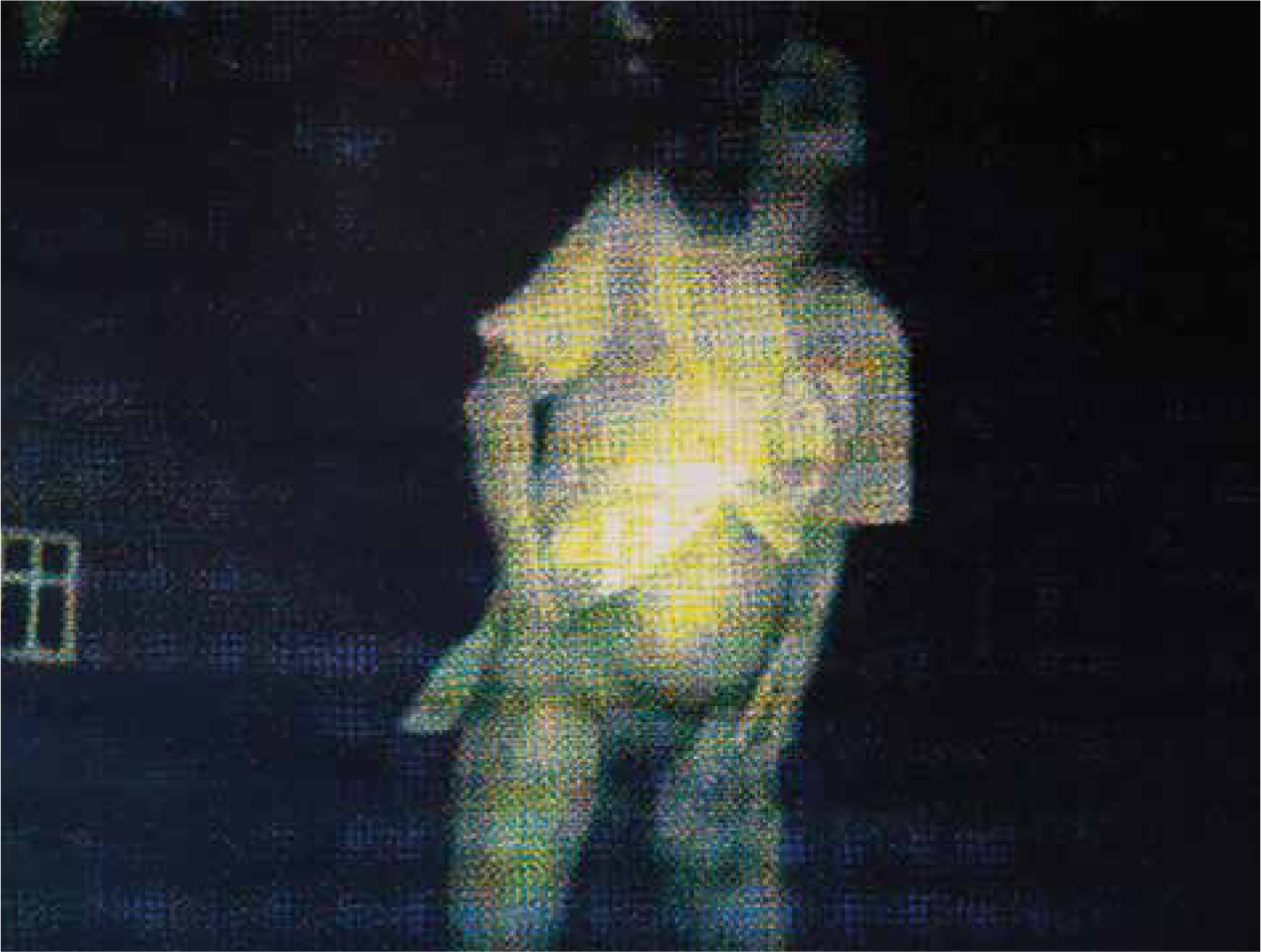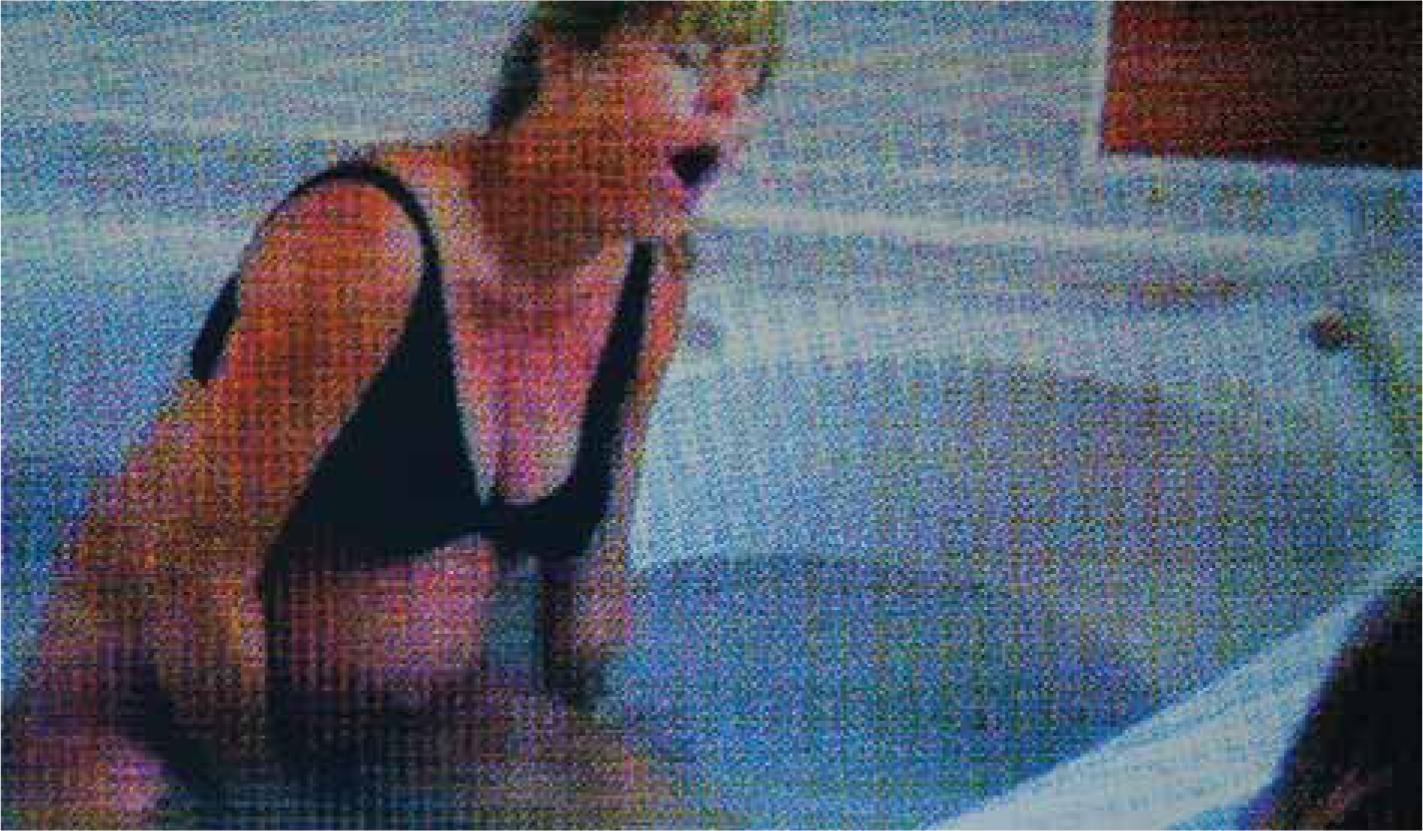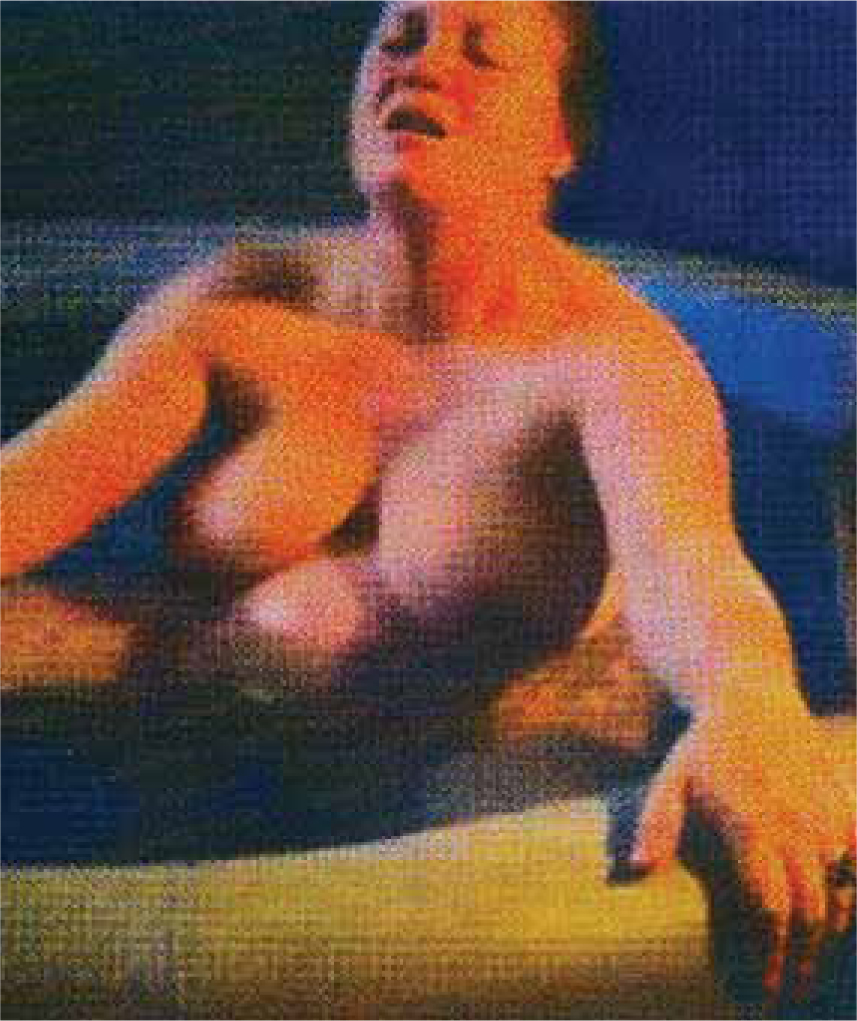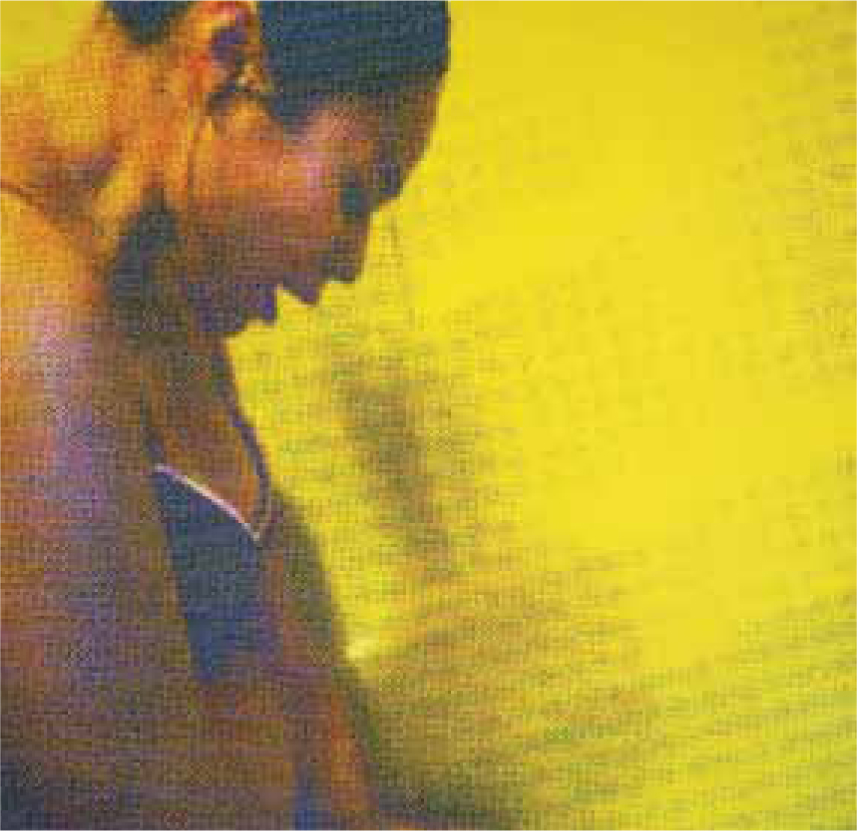Student midwives in the UK are often learning the skills of midwifery in institutions where the physiological process of birth is disturbed by technological intervention and lack of privacy. The aim of this study was to share with students representations of unmedicalised, undisturbed birth, to capture their reactions and encourage discussion of issues raised. The authors were also interested in the students’ views on the value of YouTube as a learning tool. In this pilot study, midwifery students from a range of groups were shown artist Helen Knowles’ screen-print images from her YouTube Series (Box 1). The associated videos were then played to the group, followed by a class discussion. This paper explores the students’ interactions with the material and opinions on the use of social media in the curriculum. It raised important issues for further investigation and analysis, including the significant potential of social media as a learning tool.
Background
Despite increased social power and improved health and living conditions for Western women compared with women in developing countries (United Nations, 2015), and a relatively low maternal mortality rate (Cantwell et al, 2011), there has been a decline in cultural and individual confidence in women's birthing capacity (Reiger and Dempsey, 2006). Women feel a pressing need for realistic information, as indicated by the number of hits (views) on the YouTube videos on which Knowles’ work is based. This is also represented elsewhere on the internet. One blog (Romano, 2009) asks:
‘Am I naïve to think that if more people saw images of birth in which the woman is supported and cared for, they might start asking for this kind of care?’
The proliferation of technology and the willingness of women to share one of the most intimate processes of their lives is intriguing. Their awareness of how much they are actually showing to a potentially vast audience is a matter of conjecture. However, it does raise the profile of birth and has the potential to counter the growing medicalisation of birth. The popularity of homebirth videos is evident in the number of hits on YouTube videos such as ‘Olive's Homebirth/Waterbirth’ (www.youtube.com/watch?v=niJ6F2p9Ql8) which, at time of writing, has had more than 5 million views. This suggests that women have a need to gain insight into natural birth processes. In the UK, the reality television show One Born Every Minute is also popular and influential; however, this programme depicts only mainstream maternity units.
Current evidence on the hormonal physiology of birth indicates that women require privacy to labour effectively and give birth to their babies (Buckley, 2015). Oxytocin, the hormone that gives rise to uterine contractions and is produced in its highest levels during birth and sexual arousal, has been dubbed ‘the shy hormone’ (Odent, 2012). In terms of place of birth, homebirth has been shown to be a safe option (Brocklehurst et al, 2011). The latest guidance from the National Institute for Health and Care Excellence (NICE, 2014) supports birth at home or in midwifery-led settings for low-risk women, and this is accepted as a safe and cost-effective option for women. However, hospital birth is still the norm, with only 2.3% of women giving birth at home in 2014 (Office for National Statistics, 2015). This norm is reinforced by popular culture, with TV dramas and even non-fiction such as One Born Every Minute depicting women labouring supine on beds, as passive patients, connected to monitoring machines and intravenous infusions. These are the ‘cyborg women’ discussed by anthropologist Davis-Floyd, who give birth under biomedical hegemony (Davis-Floyd and Dumit, 1998). The paternalistic model that views the woman's body as a defective machine needing routine technological and medical assistance to function is outdated (Walsh and Newburn, 2002). It is now essential to find ways of expressing these new understandings of the physiology of birth, and recognising the complexity of the mind–body connection, which is what Knowles’ artwork does.
A midwife's perspective on pregnancy and birth is that it is a rite of passage with the potential to be a hugely transformative and empowering experience. The current production-line approach to birth can be damaging to women's sense of self. The images and sounds of the erotic power that women display during undisturbed birth are largely hidden from public view. Although witnessed daily by midwives who attend homebirths, these images and sounds are absent from biomedical understandings of birth, so they are only available to women in personal videos such as the YouTube material explored by Knowles. There is a tension between the intimate, private nature of the labour and birthing process and the need women have to explore and become aware of the potential of their birthing bodies.
There is also a correlation between the inadvertent exposure of the public to pornography and advertising, when using the internet, and the idea of stumbling upon a large-scale print of a birth in a public space. The question of appropriateness is always a configuration of personal expectation, which may be influenced by cultural structures and beliefs. However, the bombardment of images cushioned in internet search engines’ data policies seemingly becomes acceptable because people do not have the power to prevent it. It could be aruged that people are more accepting of the idea of finding contentious material online, whereas images in a public space may be perceived as more controversial. The question, in this case, is whether images of birth are ‘unacceptable’ in the public domain, whatever the context.
In the YouTube Series portraits and the films from which the images are taken, women are making the conscious decision to allow other women to ‘get used’ to seeing birth. Familiarisation of audiences to imagery with a subtle sexist or even misogynist agenda is a powerful tool used by corporations for the purpose of profit in advertising and the music industry; the authors find it heartening that this tool has been subverted and reappropriated by women to teach other women about birthing. Knowles’ art has a potentially transformative role to play in furthering awareness of the importance of respecting women's birthing power and bodily knowledge. We believe that it can help women to explore their options and understand that they can choose how and where they give birth.
Artwork on the subject of birth may be seen as very challenging or even as aggressive or disturbing. Judging by some of the extreme reactions to Jonathon Waller's ‘Birth’ series (David and Rowe, 1997) and Hermione Wiltshire's inkjet print from Ina May's Guide to Childbirth (Birth Rites, 2015) some people are troubled by such art and may feel that it is inappropriate to display such explicit images publicly. During the original Birth Rites tour, the Glasgow Science Centre deemed Wiltshire's print unsuitable to be shown in the entrance way to the exhibition. Waller had numerous censorship issues during his exhibition of the Birth Series in the 1990s.
Methods
It is important for midwifery educationalists to engage with social media in order to be able to appreciate women's and students’ perspectives. It is also necessary to be aware of potential difficulties inherent in the use of social media—for example, in relation to professional behaviour, the possible exploitation of women, and ownership of the material.
In this project, groups of midwifery students were shown Knowles’ YouTube Series screen-print images and the associated videos. There followed a class discussion and anonymised comments submitted on paper. This occurred across all levels of the midwifery programme, from pre-commencement to post-qualification student groups. Discussion and comments considered not only the content of the artwork and videos, but also the students’ views on the value of YouTube as a learning tool.
Findings
Themes that arose from the discussions included:
Comments from participants about specific video clips are included in Table 1. More general comments included:
‘Fantastic normal, natural birth. No shouting “push, push, harder, breathe!!” etc by the midwife and partner. Woman centred, calm. YouTube—good resource. Nice to watch birth without anxiety of being a student midwife in the room! Nice to see natural birth still happens!’ (1E)
‘If women could see the video, they could see that homebirth can be safe. There is a fine line between sex and giving birth because of the hormones released are the same during orgasm and birth.’ (1H)
| Video clip | URL | Comments from students |
|---|---|---|
| A szülés természete (The natural way of birth) | www.youtube.com/watch?v=CH0sRTYd17I | ‘Good educationally. Beautiful birth! Be really careful ethically—even if women have posted their birth they may not want it promoted on social media’ (1A) |
| Birth with Orgasm | Video no longer online: ‘…has been removed as a violation of YouTube's policy on shocking and disgusting content’ | ‘Shows things you might not see if not there. Opportunities’ (2A) |
| unassisted childbirth/Alleingeburt | www.youtube.com/watch?v=a3ANtPxI3pE | ‘Although it is a very natural birth and relaxing. I felt a bit worried as there was no midwife, and as it was outside I feared the newborn would be cold’ (7.3.H) |
| Shiloh's quick and peaceful water birth | www.youtube.com/watch?v=3TL6GsSb3-4 | ‘Mum very insular, relaxed, but appeared very very scared! Lovely to see dad joining mum's experience EVENTUALLY! But not sure in the pool!’ (8F) |
| Homebirth of Finn No Music Waterbirth, Homebirth, Caul, Midwife, Squat Labor | www.youtube.com/watch?v=GnW7tNpyBRo | ‘Emotional. Realistic. Midwife very hands off. Shows bond between couple. Woman in control. Making verbal noises seems to help woman through pain’ (9G) |
| The Birthing of AZHEYO AEORO | www.youtube.com/watch?v=ElXokPUX490 | ‘Dangerous! Baby is going to get cold! Nice to see normality—but doesn't teach great practice!’ (3A) |
Discussion
One of the difficulties we encountered using this material directly from the internet was that when the videos are played on YouTube, links to unrelated and often inappropriate material appear e.g. ‘Rapere’, ‘Real Girls Get Real Drunk’, ‘Porno’, ‘Brace Yourself—a Blow Job Gone’, ‘Woman Turning Teen Girl Lesbian’ and ‘Hot Women Making Out’. These were often compounded by numerous insensitive, sexualised and misogynistic comments posted below the birth videos; examples included comments on pubic hair and sexualising the process of giving birth. Some of the more extreme comments have been removed by YouTube, but those which remained on the ‘Birth with Orgasm’ video include:
‘i was a lot horny lookin at her before givin birth to the baby, she look like having an orgasm yumm’
‘UUUgghhhh wtf YouTube that was really disturbing’
‘how did i get here from boobies!!!!’
There were, however, many positive comments challenging such remarks. In future, for the purposes of midwifery education, it would be possible for the clips to be removed from the YouTube site and embedded into bespoke learning materials. However, we felt that for students to be able to view them in their original setting enhanced the richness of the learning experience, by encouraging them to reflect on the range of reactions posted as well as the video clips themselves.
While integrating these images into the curriculum may add value, issues regarding social media in relation to professional behaviour are complex and must always be borne in mind. Nevertheless, there is huge scope for students to explore their ideas and experiences of birth and caring through the Art of Midwifery project (Uppal, 2014; Uppal et al, 2014). Many of the births our students witness first-hand are conducted in large institutions where the physiological process is routinely disturbed by technological intervention and lack of privacy. Therefore, our aim was to expose students to representations of unmedicalised, undisturbed birth, to capture their reactions and facilitate discussion of issues raised.
Conclusions
In this project, interacting with Knowles’ YouTube birth art and women's online videos in the undergraduate midwifery curriculum was valued by students. It raised important issues that require further investigation and analysis. We feel the artwork and videos have great potential as educational tools. The YouTube videos offer a very different view of birth than that depicted in popular culture such as One Born Every Minute. These differing representations of women giving birth provide educationalists with a powerful opportunity to explore midwifery practices that support physiological birth wherever and however it takes place.


